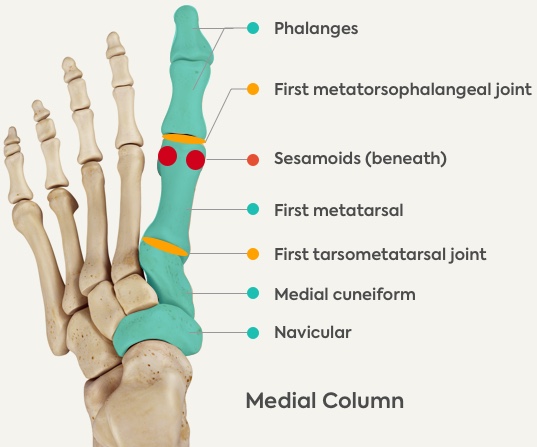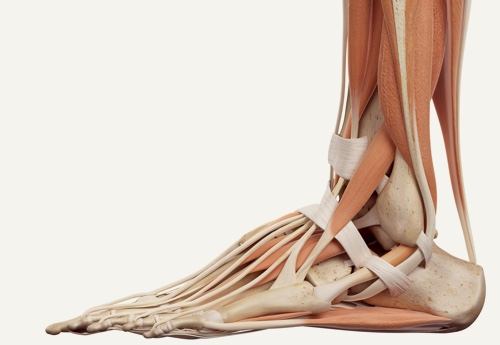
One of nature’s most complex creations
Humans are the only true biped mammals on Earth. With the highest center of gravity and a proportionately heavy head at the top, the feet form a relatively small but ingeniously engineered support system. They are the only structures in the body that have specifically evolved to hold the uniquely human stance.
The foot functions as one link in a kinetic chain, where movement at one joint influences movement in another. As the base of this chain, the foot is subject to the forces of weight and impact with each step, cushioning body force upon landing, then launching the body forward thereafter. This reconciling and neutralizing of opposing forces gives us our bio-mechanical movement.
“Learn how to see. Realize that everything connects to everything else.”
NOTHING LASTING IS BUILT ON AN UNSTABLE FOUNDATION
From daily walking to extreme sports, our feet are expected to last a lifetime of repeated pounding against the ground and propulsion across diverse terrains. Every day, we subject our feet to more physical stress than probably we realize:
- The average person will walk around 115,000 miles or 184,000 kilometres in a lifetime – that’s more than four times around the Earth.
- During an average day of walking, the forces on your feet can total approximately 30 tons – equivalent to the weight of 5 elephants.
- The pressure on the feet when running can be as much as four times the runner’s body weight.
A place for everything and everything in its place
The primary function of the human foot is ambulation … walking, running, balancing and jumping. There are over 160 moving parts in a human foot, with each part playing a critical role in a naturally complex arrangement.
33 joints connect 28 bones to form the structural foundation. A network of over 100 muscles, tendons and ligaments hold these bones and joints in place. When each moving part is naturally intact and optimally positioned, this highly evolved system operates in a state of internal balance, or homeostasis. The result is a foot that looks and functions normally, without conscious effort or any pain.

The big toe is the last part of the foot that leaves the ground when we walk. It provides us the final push needed to propel the body forward. The inner foot, also called the medial column or first ray, carries most of the body weight and contributes up to 80% of the power required for normal walking.

This amazing feat can only be credited to the ingenious engineering of a:
- Specific number of specifically-shaped bones
- Connected in a specific form
- Stabilized by strategically-located ligaments
- Operated by relatively small, but efficient muscles
Restoration, not more deviations
The human foot’s complexity and capability is more than mind-boggling. Even with today’s most advanced technology, true artificial replacement remains impossible. Furthermore, integrity of the foot’s natural arrangement can be affected by congenital defects (present from birth), degeneration (deterioration over time), trauma and also misguided surgical interventions.
Some common congenital deviations that give rise to functional problems include:
- Pes Planus – (Flatfoot or over-pronated feet) - a condition where genetically incompetent ligaments and muscles give way to body weight and let some bones collapse.
- Accessory Navicular Syndrome – a condition where an extra bone inhibits some muscles and ligaments from holding up the arch of the foot properly, giving rise to excessive pronation.
- Tarsal Coalition – is a congenital condition where an abnormal joint fusion may cause poor foot posture and result in rigid, flat feet.
Any deviation from such a specifically evolved system renders less optimal foot function. Surgeries are a form of trauma and can cause deviation if normal skeletal structures are altered. Breaking, cutting or reshaping of normal bones, as well as, fusing or eliminating normal joints will invariably compromise foot function in one way or another. Since preservation of all foundational structures will provide the best chance in restoring homeostasis, normal bones and joints should always be the last victim of surgery.

25% of all the bones in the human body are in our feet. When these bones are out of alignment, so is the rest of your body.